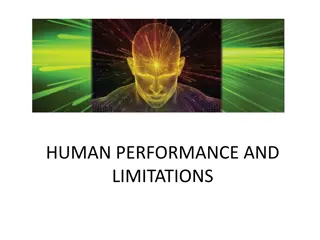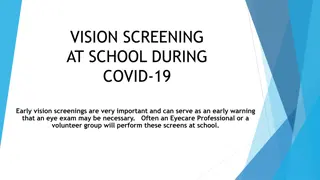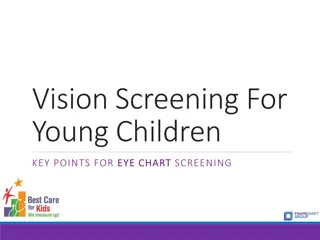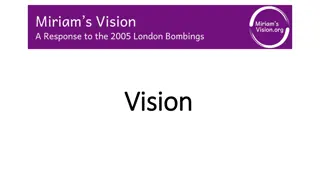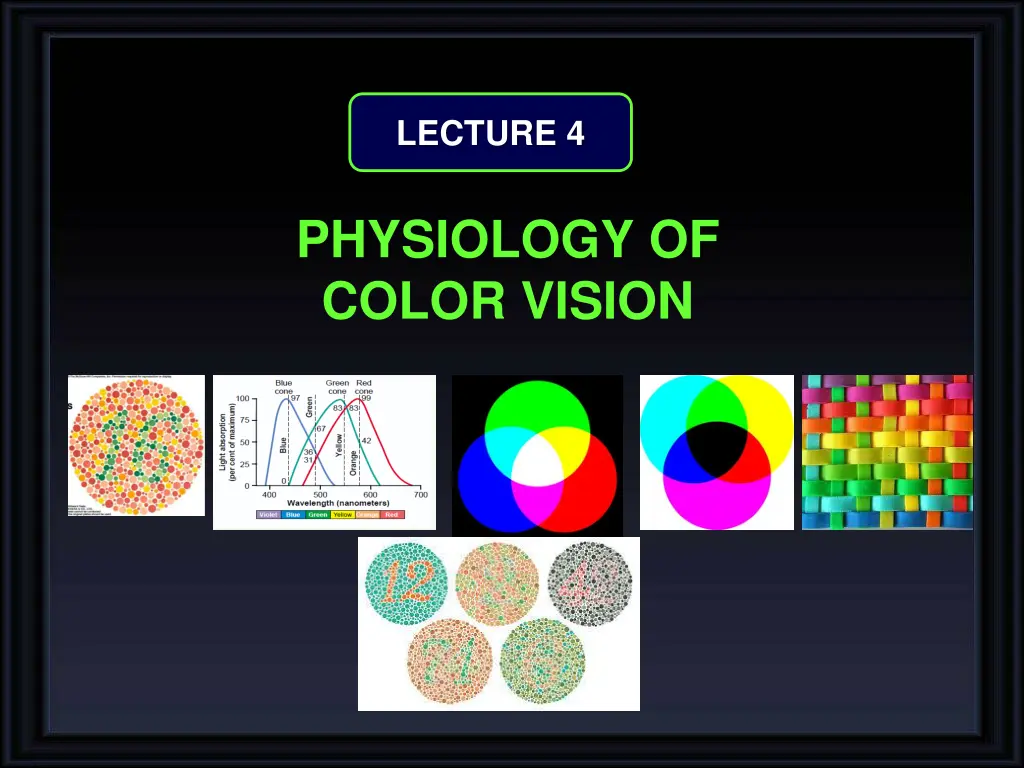
Understanding Color Vision: Physiology & Theory Overview
Explore the fascinating world of color vision in this detailed lecture covering concepts like hue, intensity, saturation, and the trichromatic mechanism. Learn about the Young Helmholtz theory, cone photopigments, and the perception of colors based on light absorption and cone stimulation ratios.
Download Presentation

Please find below an Image/Link to download the presentation.
The content on the website is provided AS IS for your information and personal use only. It may not be sold, licensed, or shared on other websites without obtaining consent from the author. If you encounter any issues during the download, it is possible that the publisher has removed the file from their server.
You are allowed to download the files provided on this website for personal or commercial use, subject to the condition that they are used lawfully. All files are the property of their respective owners.
The content on the website is provided AS IS for your information and personal use only. It may not be sold, licensed, or shared on other websites without obtaining consent from the author.
E N D
Presentation Transcript
LECTURE 4 PHYSIOLOGY OF COLOR VISION
Color Vision Concepts Colors have three attributes hue, intensity, and saturation (degree of freedom from dilution with white). For any color there is a complementary color that, when properly mixed with it, produces a sensation of white Black is the sensation produced by the absence of light, but it is probably a positive sensation because the blind eye does not see black; rather, it sees nothing.
Color Vision 3 primary colors Tricolor Mechanism of Color Detection: When red, green, and blue monochromatic lights are appropriately mixed in different combinations Each cone system respond to its color at a different threshold than needed to sense other colors (red cones respond to red or yellow color at a lower threshold than to green color) Perception of white is due to equal stimulation of blue & red & green cones. There is no wave length corresponds to white, white is a combination of all wave lengths
COLOR VISION THEORY (YOUNG HELMHOLTZ THEORY) There are 3 kinds of cone photopigments & are sensitive to one of the 3 primary colors Blue cone system: Conatins S pigment (blue sensation pigment) which respond to short wave length ( 440nm senses the blue color) Green cone system: Contains M pigment (green sensation pigment) which respond to middle wave length ( 535nm senses the green color & less to yellow) & absorb light at the green portion. Red cone system: Contains L pigment ( red sensation pigment) which respond to large wave length at or > 535 nm so senses the red & yellow color & absorb light at the red portion.
Light absorption by the pigment of the rods and by the pigments of three color-receptive cones of human retina.
Perception of colors Depends on wave length, amount of light absorbed, threshold of stimulus & frequency of impulses from cones perception of orange is due to stimulation of 99% of red cones & 42% of green cones & 0% of blue cones( so ratio is 99:42: 0) perception of yellow is due to stimulation of50% of red cones & 50% of green cones & 0% of blue cones( so ratio is 50:50: 0) perception of blue is due to stimulation of 0% of red cones & 0% of green cones & 97% of blue cones( so ratio is 0:0: 97 )
NEURAL MECHANISMS OF COLOR VISION Color is mediated by ganglion cells that subtract or add input from one type of cone to input from another type 3 TYPES OF NEURAL PATHWAYS PROJECT TO BLOBS IN V1 and layer 4: red green pathway that signals differences between L and M-cone Responses blue yellow pathway that signals differences between S-cone and the sum of L- and M-cone responses luminance pathway that signals the sum of L- and M-cone
COLOR BLINDNESS Gene for rhodopsin is on chromosome 3 Gene for blue sensitive S cone pigment is on chromosome 7 Gene for red & green sensitive cone pigment is on X chromosome. when a single group of color receptive cones is absent ( due to absence of there gene) the person can not see or distinguish some colors from others
COLOR BLINDNESS Red-green blindness:- Green & red cones see different colors between wave length 525-675 nm & distinguish them. If either of these cones are absent, the person can not distinguish 4 colors ( red green-yellow- orange) & he can not distinguish red from green (primary colors) It is x-linked disease (the gene is on x chromosome). Females from color blind fathers are carriers and transmit the disease to of their sons.
Chromatic theories of color vision Trichromats:-have 3 cone pigments( normal or have slight weakness in detecting red or green or blue color Dichromats:-have only 2 cone pigments systems only so he is completely blind to red or green or blue ( so they may have protanopia, deuteranopia,or tritanopia) they get color by mixing only 2 of the primary colors. Monochromats:-have only one cone system or loss of all so see only blackor grey or have no color perception.
NOPIA (BLINDNESS) NOMALY (WEAKNESS) 1-Protanopia (red-blindness): no red cones system so person has vision in shorter spectrum wave lengths. weakness protanomaly 2-Deutranopia (green -blindness):-no green cones system-so person see only long & short wave length) . weakness deutranomaly. 3-Tritanopia (blue -blindness) : no blue cones system. weakness tritanomaly.










